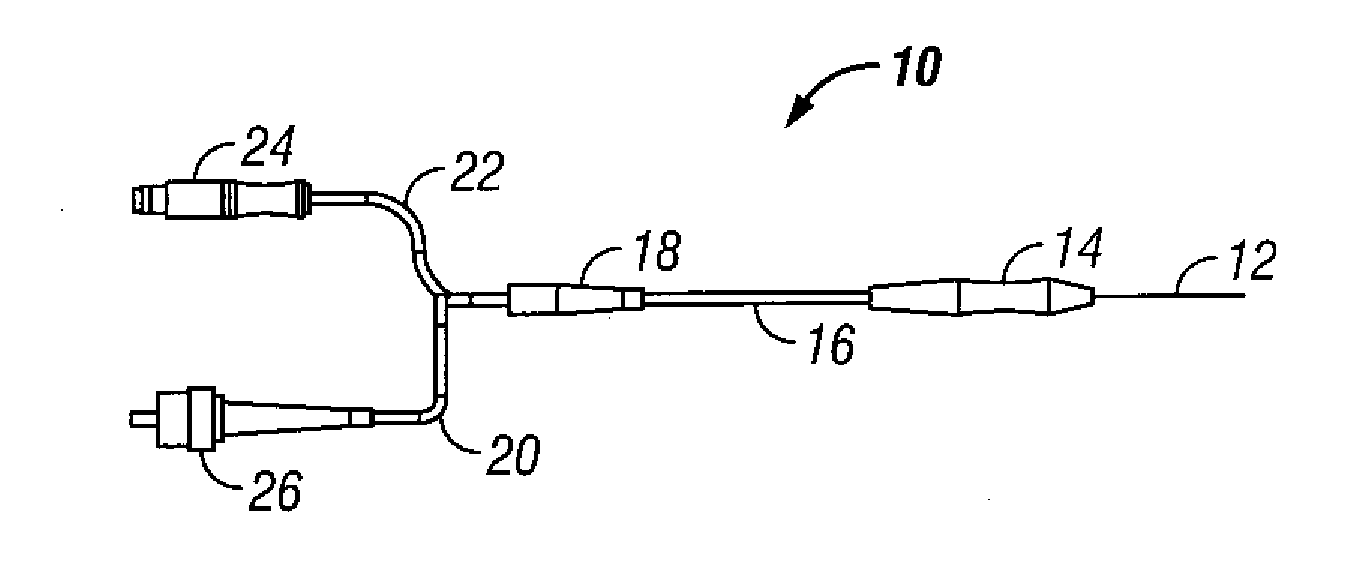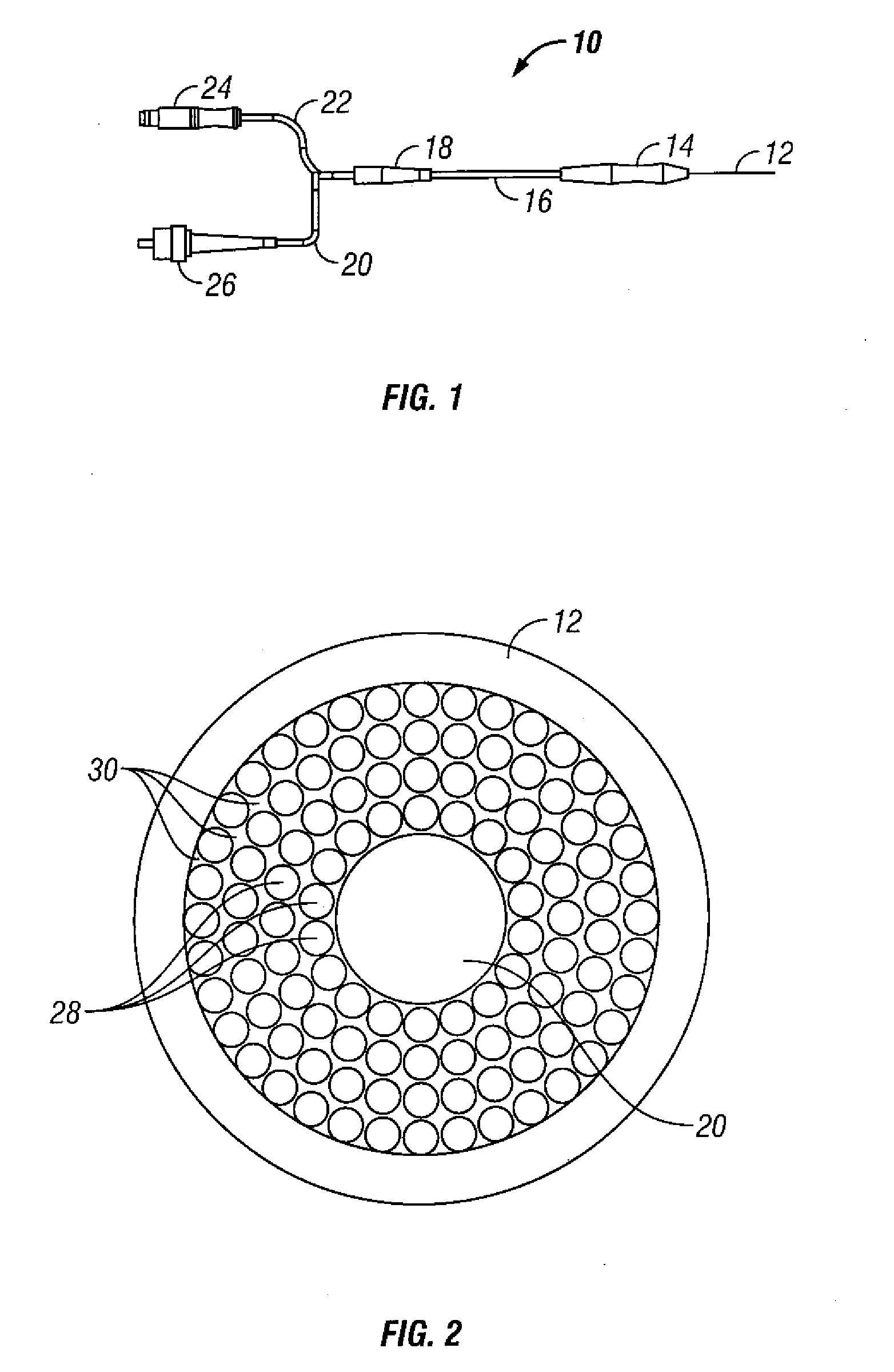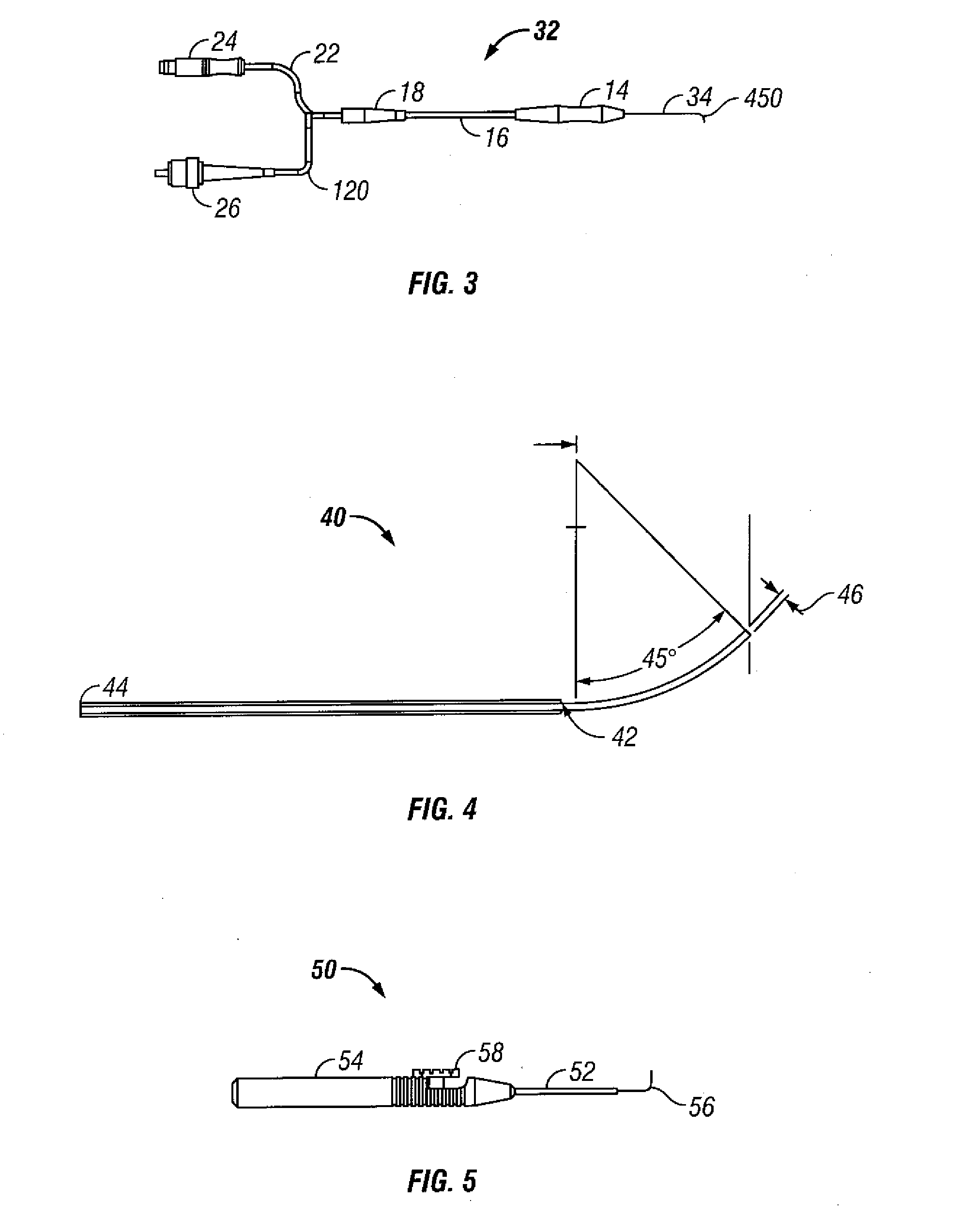Flush Tip Illuminating Laser Probe Treatment Apparatus
a technology of laser probe and flush tip, which is applied in the field of illumination probe treatment apparatus, can solve the problems of large amount of manipulation of the probe, potential for accidental contact with the retina, and the same or similar illumination area, and achieves the effects of high numerical aperture (na), improved optical transfer efficiency, and improved accuracy
- Summary
- Abstract
- Description
- Claims
- Application Information
AI Technical Summary
Benefits of technology
Problems solved by technology
Method used
Image
Examples
Embodiment Construction
[0029]Referring to FIG. 1, one embodiment of the present invention is a flush tip illuminating probe, generally denoted as 10, that has a probe needle 12 and a handle (or handpiece) 14. The needle 12 has a diameter which is typically between 20 and 25 gauge. 20 to 25 gauge is the important range in ophthalmic surgery. It will be appreciated, however, that the probe 10 can be used for other tissue sites in the body. Dimensions much smaller than 25 gauge, higher gauge numbers, such as 26 or 27 gauge are less important for ophthalmic applications due to incompatibility with existing support instrumentation and the increasing difficulty of coupling therapeutic modalities such as laser, electrosurgery, diathermy, and the like.
[0030]The probe 10 further includes a jacketed fiber bundle 16. This fiber bundle 16 is bifurcated at a union piece 18 into a laser fiber 20 and an illumination fiber bundle 22. In one embodiment, the laser fiber 20 and the plurality of illumination fibers 22 with t...
PUM
 Login to View More
Login to View More Abstract
Description
Claims
Application Information
 Login to View More
Login to View More - R&D
- Intellectual Property
- Life Sciences
- Materials
- Tech Scout
- Unparalleled Data Quality
- Higher Quality Content
- 60% Fewer Hallucinations
Browse by: Latest US Patents, China's latest patents, Technical Efficacy Thesaurus, Application Domain, Technology Topic, Popular Technical Reports.
© 2025 PatSnap. All rights reserved.Legal|Privacy policy|Modern Slavery Act Transparency Statement|Sitemap|About US| Contact US: help@patsnap.com



